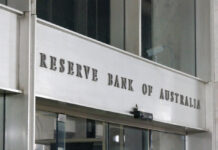Headlines
Most European stock markets started the quarter with modest losses of less than 0.5%. US equities show no clear trend at the open, trading little changed from Friday’s closing levels.
America’s factories continued to expand in March at a robust pace, demonstrating momentum in an industry that struggled for the better part of the last two years. The US manufacturing ISM marginally declined from 57.7 to 57.2, in line with expectations, but remains at a very high level.
The ECB sees no evidence that its aggressive stimulus policy is hampering financial markets, ECB Coeure said, despite deeply negative yields on some bonds and fresh signs of scarcity. He blamed political risk in some European countries and stricter financial rules since the crisis for boosting demand for short-term German government bonds.
UK manufacturing unexpectedly cooled (54.2 from 54.5) for a third month in March and may weaken further, according to IHS Markit, which repeated its warning about inflationary pressures. The final EMU manufacturing PMI was confirmed at 56.2 while the EMU unemployment rate dropped to a 7-yr low (9.5%) in February.
A blast has occurred on a subway line in Russia’s second city of St. Petersburg killing 10 people, according to preliminary reports from news agencies Interfax and TASS.
Rates
Bunds higher due to some specific reasons?
Global bonds parted ways today. German Bunds eked out more gains, bull flattening the curve. US Treasuries hovered listless throughout the session, ahead of the US ISM business sentiment. Given the sharp underperformance of the euro swap curve, we suspect that today’s Bund movements were largely due to technically (shortage?) reasons more than fundamental ones. To a very small extent, the combination of low inflation readings in the euro area and signals out of the ECB that they don’t want to contemplate changing policy now, might have still had some marginal impact. The eco data were plain vanilla. The final manufacturing PMI’s were close to the preliminary ones and the unemployment rate fell as expected.
At the time of writing, changes on the German yield curve ranged between -4.5 bps (2-yr) and -1.4 bps (30-yr), while the swap curve registered changes of between -1.3 bps (2-yr) and 0 bp (10-yr). Changes on the US yield curve vary between -0.8 bps (5-yr) and +1.4 bps (30-yr). On intra-EMU bond markets, 10-yr yield spread versus Germany widened up to 6 bps (Italy). France underperformed Belgium (+4 bps versus +2 bps). As of this week, the ECB buys only €60B/month versus €80B previously. However, we wouldn’t attribute the spread widening to the amount of ECB purchases.

Currencies
EUR/USD decline slows, at least for now
Trading in the major dollar cross rates started the new quarter on a slow footing. EUR/USD retested last week’s lows, but there was no strong enough driver for a further euro decline/dollar gain. USD/JPY also didn’t go anywhere, awaiting more guidance from this week’s eco update on the US economy. EUR/USD trades in the 1.0660/65 area. USD/JPY sits in the mid 111 area.
Overnight, Asian equities started the quarter on a positive footing. The headline Japan Tankan indicator improved for the second quarter in a row, but the rise was more modest than expected. Capex was slightly stronger than expected. The report had no lasting impact on yen trading. USD/JPY held in the mid 111 area. The dollar continued to trade mixed. EUR/USD reversed part of Friday’s late session decline, but held within reach of the correction lows reached late last week.
European investors were a bit more cautious at the start of the new quarter compared to their Asian counterparts. European equities opened in positive territory but the gains evaporated almost immediately after the open. The EMU manufacturing PMI was confirmed at 56.2 and the EMU unemployment rate declined to a 9.5%, a multi-year low. However, it didn’t help sentiment on European markets. European yields declined and the interest rate differentials between the US and Germany/Europe widened again with the 2-year spread returning well north of 200 bps. EUR/USD touched a minor correction low in the 1.0650 area, but there were no follow-through losses. At the same time, USD/JPY stabilized in the mid to lower 111 area.
For now, US trading also didn’t find any clear directional momentum as investors await the early month US data today (US manufacturing ISM) and later this week. For now both EUR/USD and USD/JPY are captured in lackluster, order-driven trading. EUR/USD changes hands in the 1.0660/65 area. USD/JPY trades in the 111.30 /40 area. US equities opened little changed from Friday.

Sterling short squeeze runs into resistance
Sterling is trading off Friday’s correction top against the euro and the dollar after a solid performance last week. EUR/GBP hovered in the low 0.85 area early in Europe. The UK manufacturing PMI declined from 54.5 to 54.2. The consensus expected a modest rebound to 55.00. The report didn’t change the overall picture on the UK in a profound way. Even so, it help to block the recent short-covering rally of sterling. EUR/GBP ‘jumped’ to the 0.8540 area. Later in US dealings, EUR/USD regained a few ticks off the intraday lows which also filtered through into EUR/GBP trading. The pair trades currently in the 0.8540/45 area. Cable drifted back to the 1.25 area. After a brief intermezzo, sterling again traded slightly in the defensive early in US dealings. The jury is still out, but today’s price action suggests that last week’s sterling short-squeeze maybe ran its course. Will political tensions and/or softer eco data again become more important as a driver for sterling trading?













